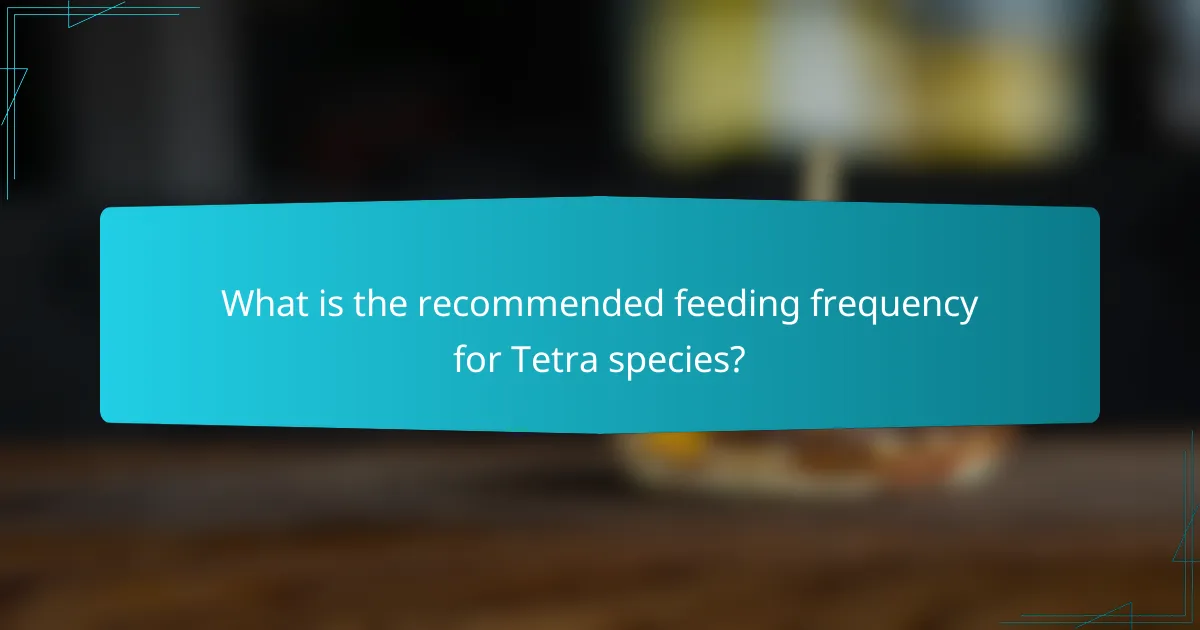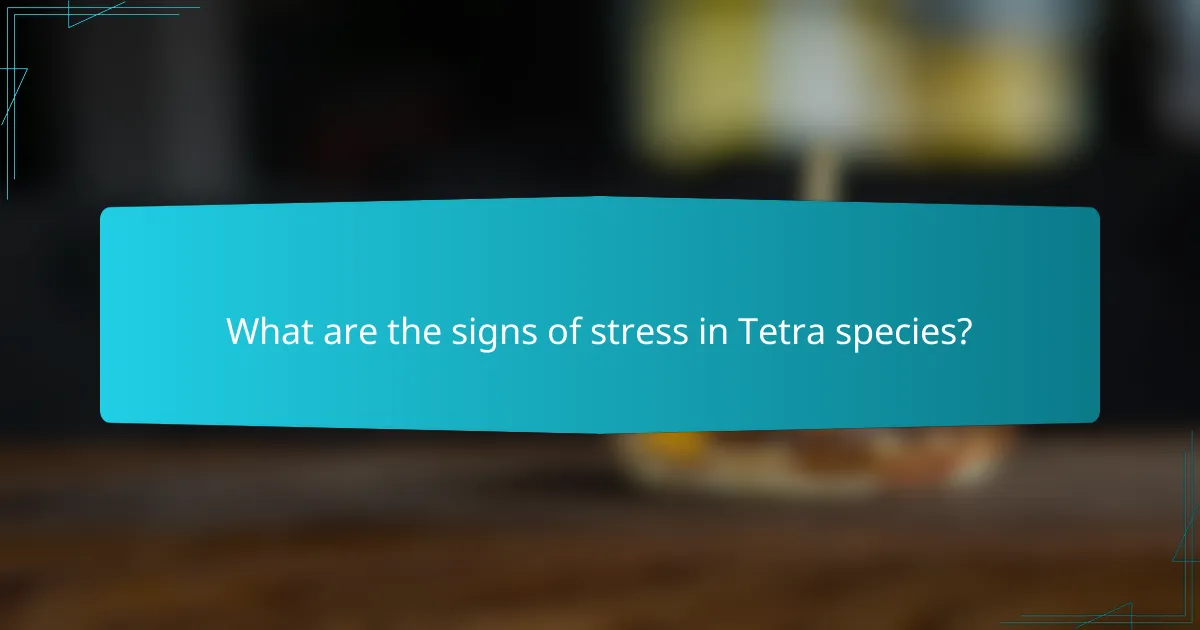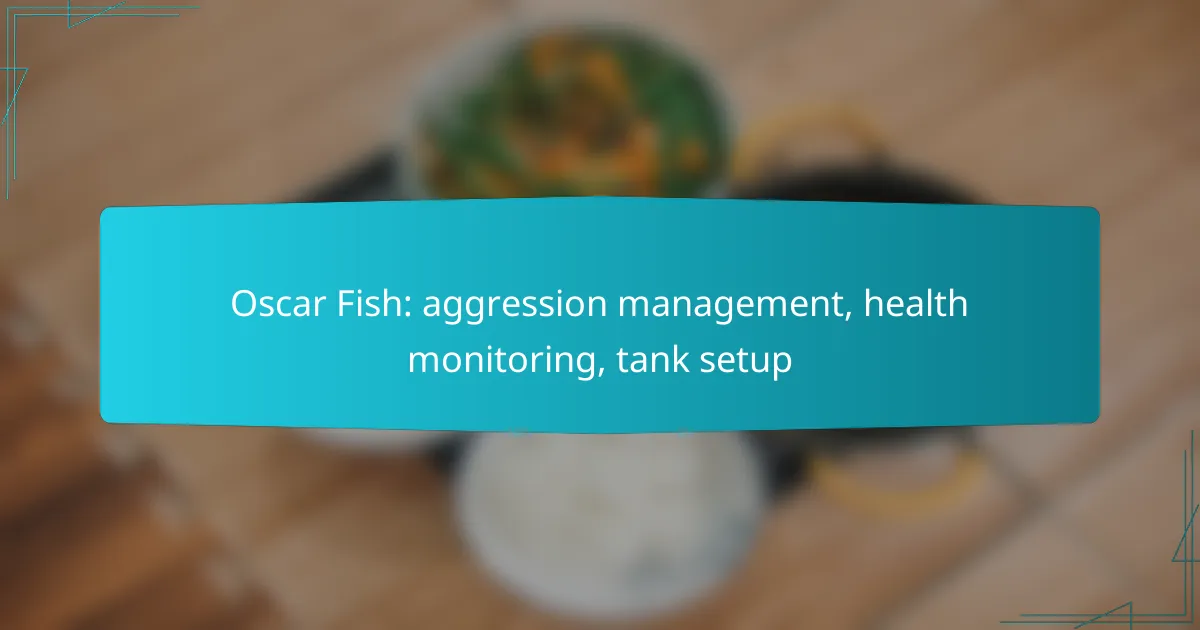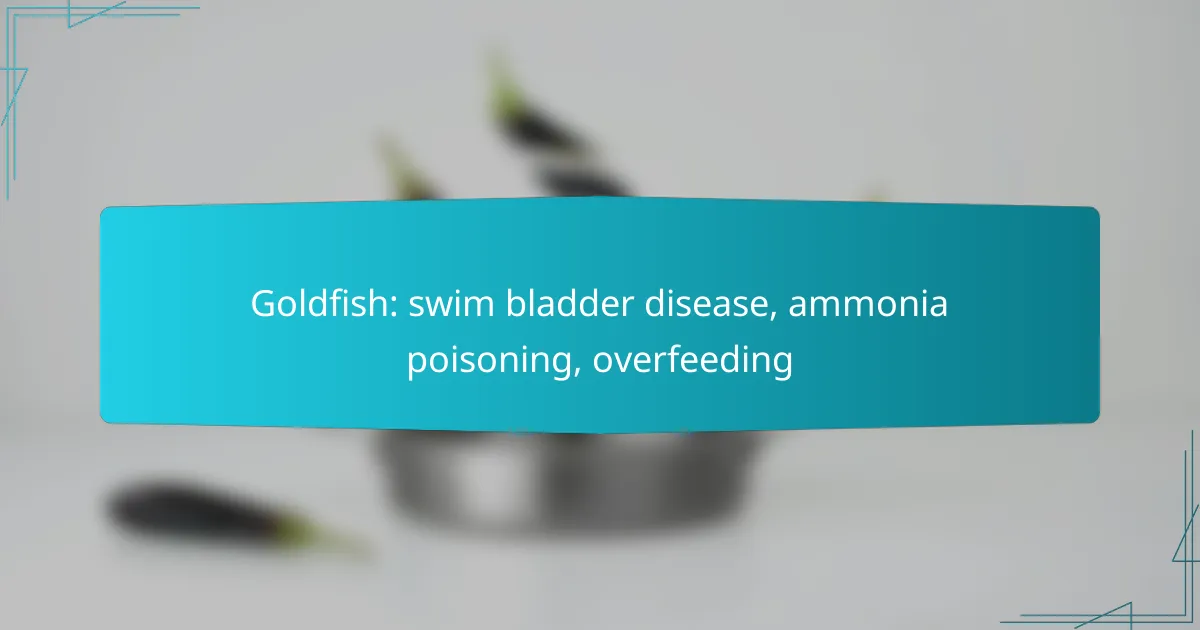Tetra species thrive in well-maintained aquatic environments, making water quality a top priority for their health. Proper tank setup that mimics their natural habitat, along with a feeding schedule of 2-3 times daily, ensures these vibrant fish remain healthy and active. By focusing on pH levels, temperature, and nutrient balance, aquarists can create an ideal living space for Tetras.

What water quality parameters are essential for Tetra species?
Maintaining the right water quality is crucial for the health and well-being of Tetra species. Key parameters include pH levels, temperature, ammonia and nitrite levels, and nitrate concentrations.
pH levels between 6.0 and 7.5
Tetra species thrive in slightly acidic to neutral pH levels, ideally between 6.0 and 7.5. Regular testing of pH is essential, as fluctuations can stress the fish and lead to health issues.
To maintain stable pH levels, consider using a quality aquarium buffer. Avoid drastic changes, as Tetras are sensitive to rapid shifts in water chemistry.
Temperature range of 22°C to 28°C
The ideal temperature range for Tetra species is between 22°C and 28°C. Keeping the water within this range promotes optimal metabolic function and overall health.
Use a reliable aquarium heater and thermometer to monitor the temperature. Sudden temperature changes can be harmful, so gradual adjustments are recommended if heating or cooling is necessary.
Ammonia and nitrite levels at zero
Ammonia and nitrite levels must remain at zero for the health of Tetra species. Both substances are toxic even at low concentrations and can lead to severe health problems or death.
Regular water changes and a properly cycled aquarium will help maintain these levels. Test kits are available to monitor ammonia and nitrite, ensuring they stay at safe levels.
Nitrate levels below 20 mg/L
Nitrate levels should be kept below 20 mg/L to ensure a healthy environment for Tetra species. While nitrates are less toxic than ammonia and nitrite, high levels can still cause stress and health issues over time.
Perform routine water changes and consider live plants, which can help absorb nitrates. Regular testing will help you keep track of nitrate levels and take action if they rise too high.

How should I set up a tank for Tetra species?
Setting up a tank for Tetra species involves creating an environment that mimics their natural habitat, ensuring proper water quality, and providing adequate space and shelter. A well-planned tank setup will promote the health and well-being of these fish.
Minimum tank size of 20 gallons
A minimum tank size of 20 gallons is recommended for Tetra species to thrive. This size allows for adequate swimming space and helps maintain stable water parameters. Larger tanks are preferable, especially if you plan to keep multiple Tetras or other species together.
In smaller tanks, water quality can deteriorate quickly, leading to stress and health issues for the fish. Always consider the adult size of the Tetras when determining the number of fish to keep in your tank.
Use a fine substrate for bottom dwellers
Using a fine substrate is essential for Tetra species, particularly for those that are bottom dwellers. A substrate like sand or small gravel allows for natural foraging behaviors and prevents injury to their delicate fins. Avoid sharp or coarse materials that can harm the fish.
Additionally, a fine substrate can help anchor plants and provide a more natural environment, enhancing the overall aesthetics of the tank.
Include live plants for shelter
Incorporating live plants in your Tetra tank is crucial for providing shelter and hiding spots. Plants create a more natural habitat, which can reduce stress and encourage natural behaviors. Tetras often feel safer and more secure when they have places to hide.
Popular plant choices include Java fern, Anubias, and Amazon sword. These plants are hardy and can thrive in various water conditions, making them ideal for Tetra tanks.
Maintain gentle filtration systems
Maintaining gentle filtration systems is vital for the health of Tetra species. Strong currents can stress these fish, as they prefer calm waters. Choose a filter that provides adequate biological and mechanical filtration without creating excessive water movement.
Consider using a sponge filter or a filter with adjustable flow rates to ensure a gentle water flow. Regular maintenance of the filtration system will also help keep the water clean and clear, promoting a healthy environment for your Tetras.

What is the recommended feeding frequency for Tetra species?
Tetra species should be fed 2-3 times daily to maintain their health and vitality. This frequency ensures they receive adequate nutrition without compromising water quality.
Feed 2-3 times daily
Feeding Tetra species 2-3 times a day is ideal for their growth and energy levels. Each feeding should consist of small amounts of food that they can consume within a few minutes. This routine helps mimic their natural feeding behavior and keeps them active.
Provide a varied diet including flakes and live food
A varied diet is essential for Tetra species, as it provides the necessary nutrients for their overall health. High-quality flakes can serve as a staple, while live or frozen foods like brine shrimp and daphnia can be offered occasionally to enhance their diet. This variety not only improves their nutrition but also stimulates their natural hunting instincts.
Avoid overfeeding to prevent water quality issues
Overfeeding can lead to deteriorating water quality, which is detrimental to Tetra species. Uneaten food decomposes and increases ammonia levels, potentially harming fish. To prevent this, only provide as much food as they can consume in a few minutes, and monitor water parameters regularly to ensure a healthy environment.

What are the best tank mates for Tetra species?
The best tank mates for Tetra species are peaceful fish that share similar water conditions and dietary needs. Ideal companions include small, non-aggressive species that can thrive in the same environment without competing for resources.
Compatible species include guppies and rasboras
Guppies and rasboras are excellent tank mates for Tetra species due to their peaceful nature and similar size. These fish typically inhabit the same water parameters, making them suitable for community tanks. Additionally, their vibrant colors can enhance the visual appeal of the aquarium.
Other compatible species include small catfish like Corydoras and certain types of minnows. When selecting tank mates, ensure they are not too large or territorial, as this can stress Tetras and disrupt the tank’s harmony.
Avoid aggressive fish like cichlids
Aggressive fish, such as cichlids, should be avoided when keeping Tetra species. Cichlids are often territorial and can bully or harm smaller, more docile fish like Tetras. This can lead to stress and potentially fatal injuries for the Tetras.
Additionally, avoid larger species that may see Tetras as prey. It’s crucial to research the temperament and size of potential tank mates to maintain a peaceful aquarium environment. Regularly monitor interactions among fish to ensure compatibility and adjust as needed.

What are the signs of stress in Tetra species?
Signs of stress in Tetra species include behavioral changes and physical symptoms that indicate discomfort or poor health. Recognizing these signs early can help prevent serious health issues and improve the overall well-being of your fish.
Faded colors and hiding behavior
Faded colors in Tetra species often signal stress, as vibrant coloration typically indicates a healthy fish. When Tetras feel threatened or uncomfortable, they may retreat to hiding spots, such as plants or decorations, to seek safety.
To mitigate this stress, ensure that your tank is well-planted and provides adequate cover. Avoid sudden changes in water conditions or tank mates that could cause anxiety.
Rapid gill movement or gasping at the surface
Rapid gill movement or gasping at the water’s surface are clear indicators of respiratory distress in Tetra species. These behaviors often arise from poor water quality, low oxygen levels, or high ammonia concentrations.
Regularly test your aquarium water for ammonia, nitrite, and nitrate levels, aiming for safe ranges (e.g., ammonia and nitrite at 0 mg/L, nitrates below 20 mg/L). If you notice these signs, consider increasing aeration or performing a partial water change to improve conditions.










